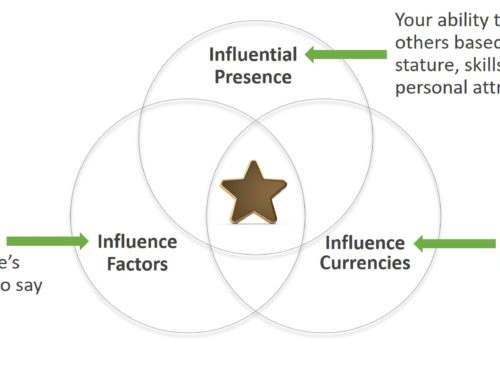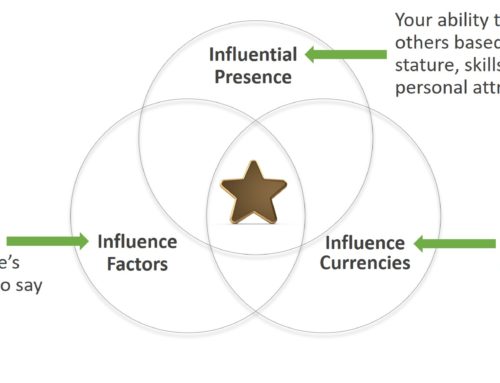Multi-step communication consists of predefined processes crafted to create a specific response and/or outcome. This communication type is often used in conflict resolution, difficult conversations, change management, motivation, and other related activities. At their core, however, they are influence vehicles generic enough to be used in situations of all types.
1. Problem/Vision Statements
Within a business setting, this technique is primarily used to gain approval and/or funding for a specific project. The “problem statement” defines the issue that must be solved, and the “vision statement” describes the desired end-state once the problem has been corrected. The format for each statement is shown below:
Problem statement:
The problem is _____, resulting in ______, thereby causing ______.
Vision statement:
It would be great if _____, allowing us to ______, thereby having the effect of _________.
For example, if the VP of sales wants funding to upgrade the company’s customer relationship management (CRM) system. The VP could say:
Problem statement:
The problem is the CRM system is running slowly, resulting in inefficiencies in our sales process, thereby causing lower company revenue.
Vision statement:
It would be great if we upgraded the CRM software, allowing us to increase sales personnel efficiency, having the effect of increasing company revenue.
The concept is that the problem causes feelings of anxiety and urgency, and the vision describes the problem-free future state. The trick is to get decision-makers to buy into the problem statement. Then it is easier to influence them to approve the funding or solution.
2. Fear/Protection
The Fear/Protection technique is used in business, politics, fundraising efforts, and other areas.
With this technique, you induce fear of a specific outcome with the goal of getting people to approve a project, vote for a specific candidate, or give money to a particular cause.
A workplace example would be:
“Our competition has greatly enhanced their website’s functionality and look-and-feel. We’re going to lose market share if we can’t drop the company politics and enhance the quality of our website.
3. Action/Consequences/Correction
This sequence is generally associated with difficult conversations, like an employee-performance issue. This issue could be ongoing or based on a single event.
The structure is:
- Action: What the person did/is doing
- Consequences: The problem it caused/is causing
- Correction: The corrective action to be taken
In a business context, this three-step process can be used anywhere.
- Example 1:
- Action: Low department funding
- Consequences: Overworked staff, reduced quality, increasing attrition
- Correction: Additional funding and hiring
- Example 2:
- Action: Being rude to a business partner
- Consequences: Loss of respect for IT in general
- Correction: Hold your temper when speaking to those outside of IT
4. Unfreeze/Transition/Refreeze
Kurt Lewin (1890 – 1947), a German-American psychologist, is considered one of the pioneers of applied psychology. He developed a three-step model for individual and organization change called Lewin’s 3-Stage Model of Change:
Stage 1: Unfreezing—Creating the right conditions for change to occur
Stage 2: Changing—Beginning to resolve uncertainty and look for new ways to do things
Stage 3: Refreezing—Reestablishing a new place of stability and elevating peoples’ comfort levels
This model is also applicable to influence because all influence creates change.
5. Statement Repetition
This technique is most often associated with two wildly different activities: difficult conversations and political rallies.
When used in difficult conversations, most often between manager and employee, the person leading the discussion repeatedly asks the same question until the other person answers the question.
For example, a discussion between a manager and an employee about the employee continually coming in late may have the following dialogue.
- Manager: How will you change your morning schedule so you will arrive at work on time?
- Employee: It’s not my fault; there’s lots of traffic.
- Manager: How will you change your morning schedule so you will arrive at work on time?
- Employee: Even when the traffic is light, it’s hard to find a parking space.
- Manager: How will you change your morning schedule so you will arrive at work on time?
- Employee: Okay, I’ll leave my house earlier to get to work on time.
In this dialogue, the manager keeps asking the employee the same question until the employee stops making excuses and eventually answers. The influence component is created because the manager does not give up until the employee commits to a workable solution.
This technique is also used in speeches at political rallies. Politicians often repeat the same words or phrases multiple times in their speeches to build momentum, increase energy, or create a memorable catch phrase.




